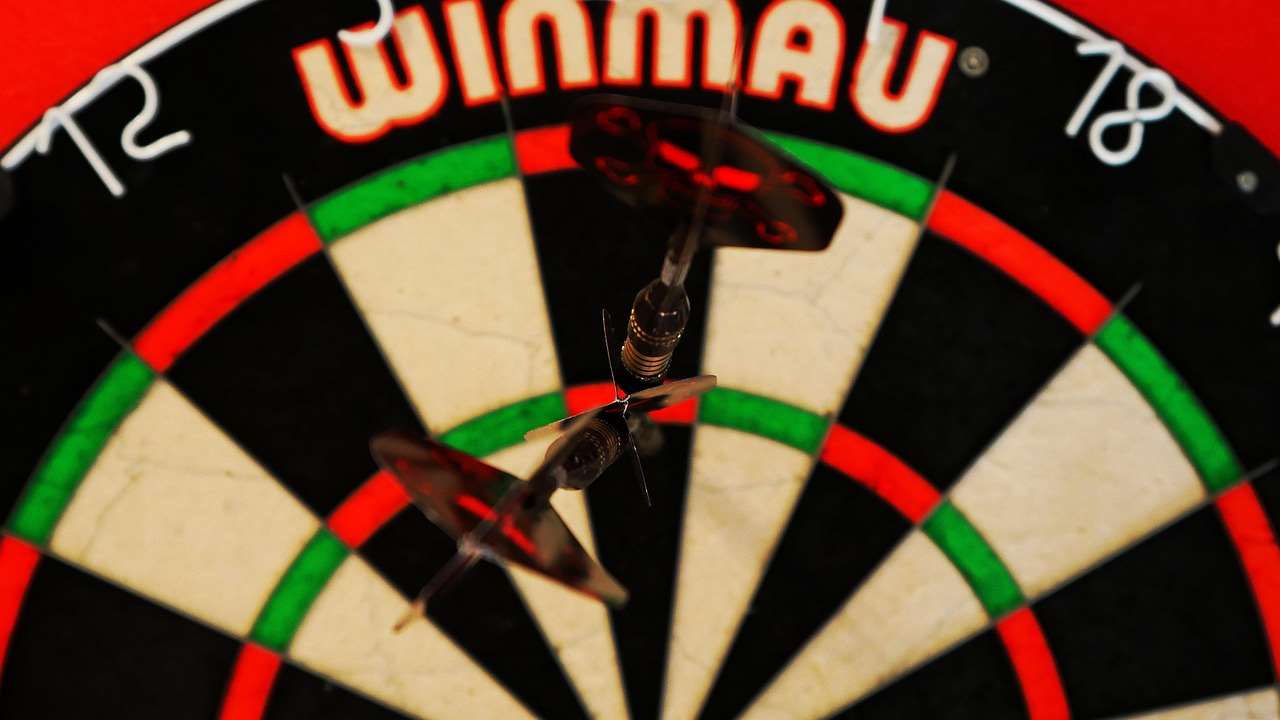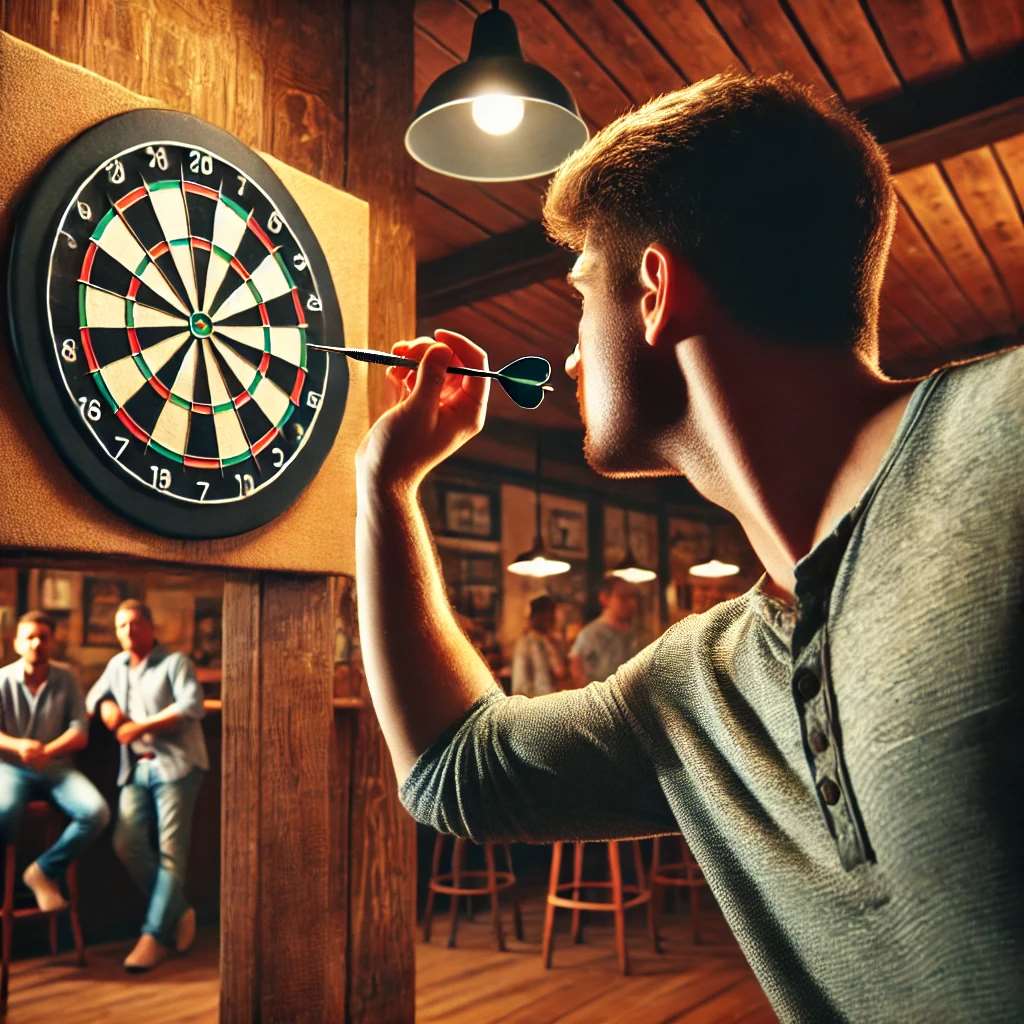Looking for darts activities examples? This article provides a variety of fun and engaging darts games and practice routines to improve your game and enjoy time with friends, no matter your skill level. We’ll cover everything from classic darts games to creative variations and effective training drills.
⚠️ Still Using Pen & Paper (or a Chalkboard)?! ⚠️
Step into the future! The Dart Counter App handles all the scoring, suggests checkouts, and tracks your stats automatically. It's easier than you think!
Try the Smart Dart Counter App FREE!Ready for an upgrade? Click above!
Exploring Diverse Darts Activities Examples
Darts is much more than just throwing three darts at a board. There’s a whole world of different games, practice routines, and social darts activities examples waiting to be explored. Understanding these options can dramatically enhance your enjoyment and skill development. This section dives into some of the most popular and engaging darts activities.
Classic Darts Games
Let’s start with the bedrock of darts: the classic games. These are the games that are played in pubs and tournaments around the world. Mastering these is essential for any serious darts player. Here are a few staples:
- 501/301: The most common darts game. Each player starts with 501 (or 301) points and must reduce their score to zero. The catch? You must finish on a double. This game tests both scoring ability and strategic thinking.
- Cricket: A strategic game focusing on closing out numbers. Players aim to hit the numbers 20, 19, 18, 17, 16, 15 and the bullseye three times each to “close” them. You can score on an open number if your opponent hasn’t closed it.
- Around the Clock (or ‘Killer’): A practice game where you must hit each number on the board in sequence, starting with 1 and ending with 20 (or the bullseye). This helps improve your accuracy and consistency.
Consider joining a local darts league to truly immerse yourself in these classic games. You might even run into a few players using darts spinning flights.

Creative Darts Variations
Beyond the classics, there are countless variations of darts games that add a twist to the traditional format. These are great for casual play and injecting some fun into your darts sessions. Here are a few fun darts activities examples to try:
- Shanghai: Each player aims to score as many points as possible on a designated number (e.g., 1). In the next round, the target number increases by one (e.g., 2), and so on, until 20. Hitting a single scores one point, a double scores two, and a treble scores three. The goal is to get a ‘Shanghai’ – a single, double, and treble of the same number in one turn.
- Golf: Each player aims to score the lowest possible score on each “hole” (number). So on the first hole (number 1), you want to hit the 1 with as few darts as possible. The lowest score after all 18 holes (numbers) wins.
- Baseball: Played like baseball, with each player having three “outs” per inning. The target numbers are based on the baseball diamond: 1st base is 20, 2nd base is 19, 3rd base is 18, and home run is the bullseye. Score runs by hitting these numbers.
Darts Activities Examples: Solo Practice Routines
Improving your darts game requires dedicated practice. Here are some effective solo darts activities examples to hone your skills:
- High Score Challenge: Aim for the highest possible score in a set number of rounds (e.g., 10 rounds). This helps improve your scoring ability and focus under pressure. Keep track of your progress using an electronic dart score counter from Electronic dart score counter.
- Double Practice: Focus solely on hitting doubles. This is crucial for finishing games like 501. Start with the easiest doubles (20, 16) and gradually work your way up to the more challenging ones.
- Treble Practice: Similar to double practice, but focusing on hitting trebles. Aim for the treble 20, treble 19, and other high-scoring trebles.
- Checkout Practice: Practice finishing specific checkout combinations (e.g., 81, 61, 41). This improves your strategic thinking and finishing ability.
Regular practice is key. Even 15-30 minutes a day can make a significant difference. Don’t worry if you have the worst darts throw to begin with; consistent practice can help you improve.

Organizing Darts Events: Creating Engaging Darts Activities
Darts is a fantastic social activity. Organizing darts events, whether casual games with friends or more formal tournaments, can be a lot of fun. Here’s how to create engaging darts activities:
Planning a Casual Darts Night
For a casual darts night with friends, keep things simple and relaxed:
- Choose a location: Your home, a local pub, or a darts club are all good options.
- Gather supplies: You’ll need a dartboard, darts, a scoreboard, and a throw line (oche).
- Decide on the games: Stick to classic games like 501 and Cricket for simplicity.
- Provide refreshments: Drinks and snacks are a must!
- Keep it fun: Don’t take things too seriously. The goal is to have a good time.
Consider creating a small prize for the winner to add a bit of friendly competition.
Running a Darts Tournament
If you’re looking to organize a more formal darts tournament, here are some additional considerations:
- Determine the format: Single elimination, double elimination, or round robin are all common tournament formats.
- Set entry fees: Entry fees can help cover the cost of prizes and other expenses.
- Create a schedule: Plan the tournament schedule in advance to ensure smooth operation.
- Provide prizes: Offer attractive prizes to incentivize participation.
- Promote the event: Spread the word about your tournament through social media, flyers, and local darts clubs.
Using a dart scorer uk based app or software can streamline the tournament management process. Be sure to clearly communicate the dartboard oche distance to all participants.
Improving Your Darts Game: Advanced Darts Activities Examples
Once you’ve mastered the basics, it’s time to take your darts game to the next level. These advanced darts activities examples will help you refine your technique and strategy.
Analyzing Your Throw
Understanding your throwing style is crucial for identifying areas for improvement. Consider recording yourself throwing darts and analyzing the footage. Pay attention to your:
- Stance: Is it stable and balanced?
- Grip: Is it consistent and comfortable?
- Arm movement: Is it smooth and controlled?
- Release point: Is it consistent?
Making small adjustments to your throwing technique can have a big impact on your accuracy. Maybe even find some dartboard vector free images to analyze your throw.
Mental Game Training
Darts is just as much a mental game as it is a physical one. Developing a strong mental game is essential for performing well under pressure. Try these techniques:
- Visualization: Visualize yourself hitting the target before each throw.
- Positive self-talk: Replace negative thoughts with positive affirmations.
- Focus: Block out distractions and concentrate on the task at hand.
- Breathing exercises: Use deep breathing techniques to calm your nerves.
Mental resilience can be the difference between winning and losing a close match. Understanding these darts activities examples will help you improve the mental side of your game.
Equipment Optimization
The right equipment can also make a difference in your performance. Experiment with different types of darts, shafts, and flights to find what works best for you. Consider factors such as:
- Dart weight: Heavier darts may be more stable, while lighter darts may be easier to control.
- Shaft length: Shorter shafts can improve accuracy, while longer shafts can provide more stability.
- Flight shape: Different flight shapes can affect the dart’s trajectory and stability.
Talk to experienced darts players or visit a specialty darts shop for advice on choosing the right equipment.

Social Aspects of Darts: More Than Just a Game
Darts is a social game at its core. It’s a great way to meet new people, socialize with friends, and enjoy some friendly competition. These darts activities examples showcase the social aspect of darts.
Joining a Darts League
Joining a darts league is an excellent way to improve your game and meet other darts enthusiasts. Leagues provide a structured environment for playing regularly and competing against other players. Look for leagues at local pubs, darts clubs, or community centers. You might even find inspiration at bullseye darts yatala photos.
Organizing Darts Parties
Darts parties are a fun way to celebrate special occasions or simply get together with friends. Consider themed parties, costume contests, or potluck dinners to add some extra excitement.
Darts and Charity
Many darts organizations and leagues support charitable causes. Participating in darts events that benefit charity is a rewarding way to give back to the community while enjoying your favorite game.

Conclusion
From classic games to creative variations and dedicated practice routines, the world of darts offers a wealth of engaging darts activities examples. Whether you’re a seasoned pro or a complete beginner, there’s always something new to learn and explore. Embrace the variety, hone your skills, and most importantly, have fun! Now that you’re armed with these darts activities examples, it’s time to grab your darts, step up to the oche, and start playing. Are you ready to take your game to the next level and perhaps become a darts master today? Start exploring these activities and enjoy the journey!
Hi, I’m Dieter, and I created Dartcounter (Dartcounterapp.com). My motivation wasn’t being a darts expert – quite the opposite! When I first started playing, I loved the game but found keeping accurate scores and tracking stats difficult and distracting.
I figured I couldn’t be the only one struggling with this. So, I decided to build a solution: an easy-to-use application that everyone, no matter their experience level, could use to manage scoring effortlessly.
My goal for Dartcounter was simple: let the app handle the numbers – the scoring, the averages, the stats, even checkout suggestions – so players could focus purely on their throw and enjoying the game. It began as a way to solve my own beginner’s problem, and I’m thrilled it has grown into a helpful tool for the wider darts community.